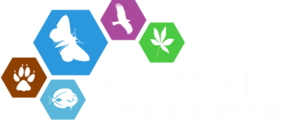Training & outreach
Thierry Backeljau & Isa Van de Velde (RBINS)
|
KEY RESOURCES |
|---|
| Join the Ambassadors programme. |
| Upcoming Scratchpad training courses. |
| Just missed a training course? Try out the Sandbox or ask for a home-training site. |
| Have a look at the ViBRANT promotional leaflet. |
Objectives
Training is part of the outreach activities of the ViBRANT project. The major objective is to enhance the use of ViBRANT tools and to support and extend the user communities working with those tools that will lead to an increased production of biodiversity information.We seek to understand the barriers to adoption and use of tools by our user community.
It is clear that the delivery of training to small groups is not scaleable within the available project resources, so two strategies are combined to deliver more effective training to a greater number of participants. First, the on-line help system has been developed to deliver context-sensitive training materials (i.e. elements of the normal training courses). Second a system of Ambassadors is being developed.
Training is organised by the Scratchpad support team. At the time of writing (November 2011) the Scratchpad team consists of the project leader, three developers, and three user support staff (some part time). At least 5 team members (developers and user support staff) take part in the delivery of training courses. In addition, it is expected that Ambassadors will engage in delivering demos and training in their research community.
We organise and deliver training resources in order to support and extend the user communities working with ViBRANT products. This includes training courses organised at regular intervals mainly at NHM London and at workshops associated with conferences, bringing ViBRANT products to meetings organised by user communities. If you would like to include a training course with a conference you're organising, please e-mail us at scratchpad_at_nhm_dot_ac_dot_uk. In addition to training courses, electronic resources are accessible to users at their home institution via the website. Training manuals and other help files are available on each Scratchpad (…/admin/advanced_help/scratchpadify_help) for self-training, if no opportunity to participate in a training course arises. Self-training can also be done on a temporary site, the ‘Sandbox’, that is wiped every 6 hours. Alternatively, the Scratchpad team can provide a home-training site where users can practice for a longer period.
| |
Training includes basic and advanced courses. In addition, tailor-made |
Mechanisms
In order to promote Scratchpad use and to foster long-term sustainability of the Scratchpad community, the ViBRANT project launched the Scratchpad Ambassador programme. We are recruiting enthusiastic and experienced Scratchpad users to be the official local representative of the Scratchpad community, linking the Scratchpad team with Scratchpads' growing user base. Ambassadors spread the word about Scratchpads, promote the use of Scratchpads and arrange or give training in their local Scratchpad community. Ambassadors are our point of contact for Scratchpad users in their local taxonomic community and in that way they help the Scratchpad team to better understand the needs of users, so that the Scratchpad developers can keep improving Scratchpads.
Outreach
A promotional strategy for ViBRANT services has been developed that describes ViBRANT’s overall outreach efforts aiming to optimise the results and output of the project as well as the dissemination of these results to all relevant stakeholders in order to encourage use of ViBRANT tools and services. It encompasses a structured set of dissemination tools and planned outreach activities, that will effectively send the intended messages about the operational objectives to the existing and potential stakeholders. The approach proposed will enable the project to obtain maximum visibility and coverage. The outlined promotional strategy is not a static but a dynamic document that will be updated when the project results are moving forward and feedback is received from the stakeholders.
The University of Trieste had several formal and informal communications with the scientific community in Italy and more broadly in Europe, in which they described VIBRANT and Scratchpads. They proposed the adoption of Scratchpads in two Italian national initiatives:
-
commented lichen flora of Italy;
-
as a taxonomic framework for the forthcoming Italian National Biodiversity Node.
Both initiatives are currently in discussion by the relevant scientific communities.
The reception by the Italian scientific community in particular was mixed: while there is an increasing interest in a new e-way to manage and share taxonomic information, few taxonomists are really ready to adopt a new community approach for managing information and producing new content. A certain interest was expressed by the members of the forthcoming Italian National Biodiversity Node, who are exploring new possibilities in digitalising and sharing biological data.







